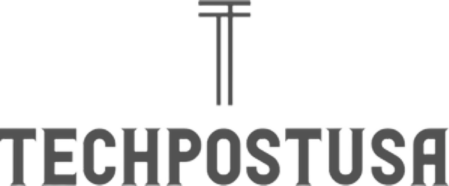What is Content Mapping and How It Shapes Effective Marketing
Modern digital marketing is not just about producing content, it’s about creating the right content for the right audience at the right time. That’s where content mapping comes into play. If you’ve ever asked yourself what content mapping is, the answer lies in the fusion of marketing strategy and consumer psychology. Content mapping is the practice of organizing and planning content based on where your audience is in their buying journey. It ensures your messaging is targeted, timely, and tailored to user intent. Without a strategy like content mapping in place, businesses risk producing content that’s disjointed or irrelevant, leading to poor engagement and low conversions. The value lies in delivering real solutions to real questions, presented at the moment the user is most likely to engage.
How Customer Journeys Influence Content
Content mapping relies heavily on understanding the customer journey, which is typically segmented into three main stages: awareness, consideration, and decision. In the awareness stage, potential customers are identifying a problem or a need. Content here should be educational, providing value without pushing for a sale. As they move into the consideration stage, they begin comparing different solutions. This is where you introduce more specific information comparisons, product insights, and case studies. In the decision stage, prospects are ready to commit, and content should drive conversion with offers, demos, and proof of results. A well-executed content map outlines this journey and matches each piece of content with the appropriate stage, ensuring a smoother and more persuasive path to purchase.
Understanding Your Audience Through Personas
To map content effectively, you must first know who you’re creating it for. This is achieved by building detailed buyer personas. These semi-fictional profiles are based on market research, customer data, and behavioral trends. Personas reveal key details such as job role, industry, goals, pain points, and preferred content formats. When you understand the nuances of each audience segment, content mapping becomes more precise. You’re no longer creating generic articles or videos, you’re developing highly targeted assets designed to speak directly to a persona’s needs. This level of personalization enhances the user experience and strengthens your connection with potential buyers.
Content Types for Each Funnel Stage
Different types of content serve different purposes throughout the funnel. In the top-of-funnel (TOFU) or awareness stage, the goal is visibility. Blogs, social media content, and infographics educate and generate interest. At the middle-of-funnel (MOFU), users are evaluating their options. Here, you might leverage whitepapers, expert guides, or explainer videos to help users consider your solution. Bottom-of-funnel (BOFU) content focuses on conversion through customer success stories, product demos, or trial offers. By mapping content types to each funnel stage, you create a seamless narrative that educates, persuades, and converts. This is the essence of what is content mapping and why it’s so critical to digital strategy.
Aligning Content With Business Objectives
Content mapping not only improves customer targeting but also ensures alignment with broader business goals. Whether your aim is lead generation, customer retention, or upselling, content can be developed to support each objective. For example, if retention is a priority, BOFU content like onboarding guides or loyalty programs should be mapped accordingly. If your goal is thought leadership, TOFU content like industry trends or expert interviews becomes vital. This strategic alignment keeps your messaging focused and performance-driven. Without a mapping strategy, teams often create content in silos, resulting in wasted resources and missed opportunities. Content mapping bridges this gap by linking audience needs with business intent.
Data and Tools That Power Content Mapping
To build a strong content map, you need the right data and tools. Start with analytics tools that track user behavior across your website and platforms. Use customer feedback, CRM insights, and keyword research to discover what your audience is searching for and engaging with. Content planning tools like editorial calendars, AI-assisted content generators, and SEO platforms help you align messaging with current trends and audience demand. Visualizing your content map with software like Trello, Airtable, or specialized content mapping tools can simplify collaboration and scheduling. The clearer your strategy, the more easily you can fill gaps, avoid redundancy, and optimize performance across channels.
Common Pitfalls to Avoid in Content Mapping
Many businesses make the mistake of mapping content based solely on topics rather than customer needs. Another common issue is neglecting to update the content map as the audience evolves. Sticking with outdated personas or ignoring shifts in market behavior leads to misalignment. Some also fail to connect content across channels your blog, emails, ads, and landing pages should work together to push the user forward in their journey. These mistakes can reduce the effectiveness of even the best-written content. Staying flexible, continuously analyzing performance, and revisiting your map regularly can help you avoid these issues and maximize the strategy’s value.
FAQs
What is content mapping in digital marketing?
Content mapping is the strategy of creating and organizing content based on the specific needs and behaviors of audience segments at each stage of the buyer’s journey, ensuring relevance and engagement.
Why does content mapping matter for SEO?
By aligning content with user intent and optimizing for keywords relevant to each stage, content mapping improves discoverability in search engines and increases organic traffic.
Do I need to update my content map regularly?
Yes. Consumer behavior, market conditions, and product offerings change over time. Regularly reviewing your map ensures your content remains relevant and effective.
Can I do content mapping without a large team?
Absolutely. Even small teams can implement content mapping using templates, automation tools, and repurposing strategies to maximize output without overextending resources.
How is content mapping different from a content calendar?
A content calendar is a scheduling tool, while content mapping is a strategic framework. The content map informs what you should create and why, while the calendar outlines when and where to publish it.
Conclusion
To succeed in today’s digital environment, businesses must move beyond random content creation and embrace a strategic, audience-first approach. Knowing what is content mapping empowers you to develop meaningful, timely, and persuasive content that guides users through the buying process. It ensures every asset has a clear purpose, serves a defined audience need, and contributes to your overall marketing objectives. Whether you’re looking to increase traffic, boost conversions, or retain customers, content mapping provides a roadmap that keeps your efforts focused and results measurable. Start by understanding your audience, mapping their journey, and aligning your content to each step and watch your content performance grow.
Author Bio
Alex Rivera is a performance marketing expert specializing in ad monetization and user acquisition. With years of hands-on experience at PropellerAds, he helps digital businesses scale smarter through targeted advertising. Discover innovative ad solutions and more by visiting PropellerAds today.




